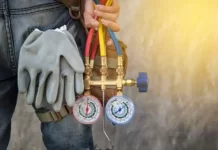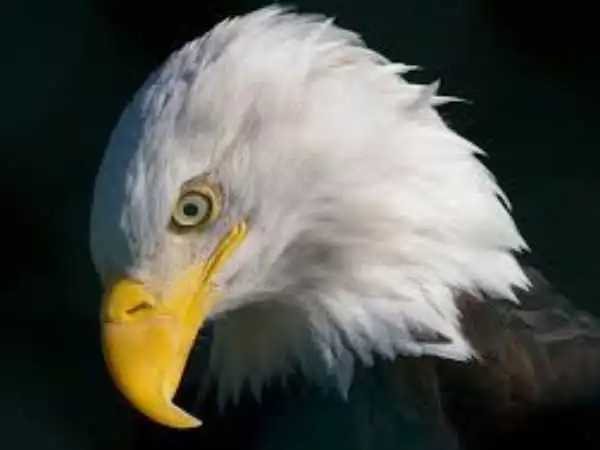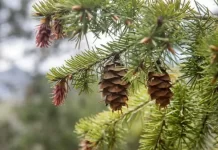Across the globe wildlife enthusiasts and environmentalists have devoted tremendous attention to bird conservation. One of the most famous conservation organizations among the many devoted to this purpose is the Hancock Wildlife Foundation (HWF), founded with the goal of protecting Hancock birds, especially bald eagles. Of course, HWF has also been instrumental in protecting raptors and other birds through research, education, and habitat preservation.
In this article we’ll explain the work of the Hancock Wildlife Foundation, eagle conservation, tracking technologies, and the wider threats that climate change poses to bird species.
The Role of the Hancock Wildlife Foundation (HWF)
Based in North America, Hancock Wildlife Foundation is a registered charity founded by David Hancock to preserve and find studies about birds, primarily bald eagles. It works on a number of conservation projects, including live eagle cams, habitat restoration and education and outreach programs.
HWF’s mission is conceptualized around:
✔Raptor protection and preservation of ecological habitats
✔ Researching bird migration and nesting patterns.
✔ Tracking and studying eagles with new technology.
The foundation has become focused in eagle conservation through a dynamic of scientific research, advocacy, and public engagement.
Bald Eagle Conservation and Protection
Through conservation efforts over the past several decades, bald eagles, once an endangered species, have made a remarkable comeback. Yet, dangers like habitat loss, climate change and human interference still threaten their survival.
Key Conservation Strategies Include:
🔹 Nest Protection Programs – Protecting nesting locations from human activity
🔹 Ending The Use Of Harmful Pesticides — Chemicals like DDT had decimated eagle populations.
🔹 Prosecution of Anti-Poaching Laws – Providing legal protection for raptors.
These measures combined resulted in the removal of the bald eagle from the Endangered Species List in 2007.
How Live Eagle Cams Help in Conservation
Live-streaming eagle cams have emerged as one of the best methods for studying raptors. These cameras offer real-time glimpses into all things eagle — behavior, nesting and parenting.
Benefits of Live Eagle Cams:
✅ Public Awareness – Thousands of people view and learn about eagles.
✅Scientific Research – Monitoring eagle behavior without any disturbances.
✅ Educational Value – Schools and colleges use these feeds for zoology lessons
One of the most popular live-streamed nests is in British Columbia, Canada, where viewers around the globe watch the eagles’ progression from egg to fledgling.
Strategies for Protecting the Wildlife Habitat
Bird habitats are essential to ensure birds live. Hancock Wildlife Foundation also participates in a number of habitat restoration projects:
· 🌿 Introducing native trees for nesting places.
· 🌾 Protecting wetlands where eagles hunt for fish.
· 🏞 Establishing buffer zones to guard against urban sprawl.
HWF works with local governments and conservationists to manage a balanced ecosystem for raptors.
Why Raptor Rehabilitation Is Important
Without humans, injured or orphaned eagles often are unable to survive. Bird rehab centers for raptors do an essential service treating, caring for, and rehabing these birds for release back into the wild.
Top Reasons for Rehabbing:
Injuries from power lines or vehicles.
Poisoning from pesticides or lead bullets.
Orphaned chicks needing care until they can hunt.
By supporting wildlife rescue centers, HWF ensures that injured eagles get a second chance at life.
Urban Wildlife Adaptation and Coexistence
From Habitats Lost, Eagles, and other raptors are adapting to Urban Environments Though cities can offer food sources and nesting sites, they can also deliver pollution, power lines, and human disturbance.
How to Promote Coexistence:
· Creating artificial nesting platforms in secure areas.
· Coating power lines to be less injurious to flying creatures.
· Build green spaces to create hunting grounds.
Teaching communities how to co-exist with wildlife may balance urbanisation and conservation.
Educational Initiatives for Avian Conservation
You can help them by becoming aware. HWF operates education programs in schools, colleges, and online to educate:
· Eagles’ role in ecosystems.
· How climate change is affecting wildlife.
· The role of science in conservation research.
Inspiring young minds creates future conservation leaders!
Eco-Tourism and Bird Watching Opportunities
Unique and effective design: Birdwatching is the second most commonly practiced hobby after gardening. Eco-tourism creates income which funds wildlife sanctuaries, bird reserves and conservation projects.
Best Places for Eagle Watching:
Alaska – Home to the largest bald eagle population.
British Columbia – HWF’s conservation area.
Florida – Many nesting sites along the coast.
Eagle sightings are also reported by bird watchers to help track migration patterns.
David Hancock’s Legacy in Wildlife Conservation
David Hancock has spent over 60 years studying bald eagles and advocating for their protection. His work includes:
· Publishing books, research papers, etc.
· Creating live-streaming eagle cams.
· Making awards for conservation efforts.
His devotion to wildlife preservation has motivated thousands of people around the globe.
Innovations in Conservation Technology
New technology is transforming how we study and protect birds. Key innovations include:
GPS Tracking – Studying migration patterns.
Acoustic Monitoring – Listening to bird calls for research.
AI-Powered Cameras – Identifying bird species automatically.
These technologies also help improve conservation effectiveness and make efforts more scientifically driven.
Climate change affects eagles in many ways.
Climate change is a key threat to eagles today. Increased temperatures and destruction of habitats disrupt nesting, food sources and migratory paths.
How Climate Change Impacts Eagles:
Forest fires destroy nesting areas.
Rising sea levels flood coastal nests.
Weather changes disrupt migration patterns
Eagle conservation and climate change action must go hand in hand.
Understanding Eagle Migration Patterns
Each year Bald Eagles migrate thousands of miles in search of food and nesting locations. Discovering their migration routes helps conservationists protect them at important stopover sites.
Key Migration Facts:
· Eagles migrate between Canada and the U.S. seasonally.
· Some eagles journey all the way to Mexico and South America.
· They trace rivers and coastlines in search of food.
Researchers use GPS tracking to keep tabs on migration patterns and environmental shifts.
Tracking Technology and Its Role in Bird Research
By tracking individual birds using satellite technology, scientists are able to monitor their movements. This helps in:
Identifying critical habitats.
Studying survival rates.
Understanding behavior changes due to climate.
Since this information is vital for long-term conservation planning.
Global Conservation Efforts by HWF
HWF collaborates with international organizations to protect eagles worldwide. Some partnerships include:
The Audubon Society – U.S. bird conservation projects.
Canadian Wildlife Federation – Protecting northern habitats.
European Raptor Network – Studying global bird migration.
By working together, these organizations strengthen conservation impact.
Legislation and Advocacy for Raptor Protection
Laws are a big part of helping prevent bird poaching—there are laws to protect the birds or the land they live on. Key legislations include:
· The Bald and Golden Eagle Protection Act (U.S.)
· The Migratory Bird Treaty Act
· CITES (International Law)
Such laws are enforced and updated by advocacy groups.
Wildlife conservation problems and future solutions
Despite advancements, there are threats — including urbanization, illegal hunting and climate change. Future solutions include:
· Expanding protected areas.
· Educating the public about wildlife conservation.
· Fortifying worldwide coalitions.
Through sustained work, we can win a future for eagles and other raptors.
How You Can Help Conserving Eagles
Want to help? Here’s what you can do:
· Support organizations like HWF.
· Get involved with citizen science projects.
· Fight for wildlife protection laws to be taken stronger.
· Raise awareness of what conservation can do.
“Every small action counts in helping protect our planet’s wildlife.”
Conclusion: The Future of Avian Conservation
David Hancock and the HWF have left an lasting impacton the conservation of eagles. Through technology, education and protective legislation, we can keep the raptors safe for future generations..
As scientists, conservationists, and the public remain committed to protecting the avian conservation will continue moving forward.























